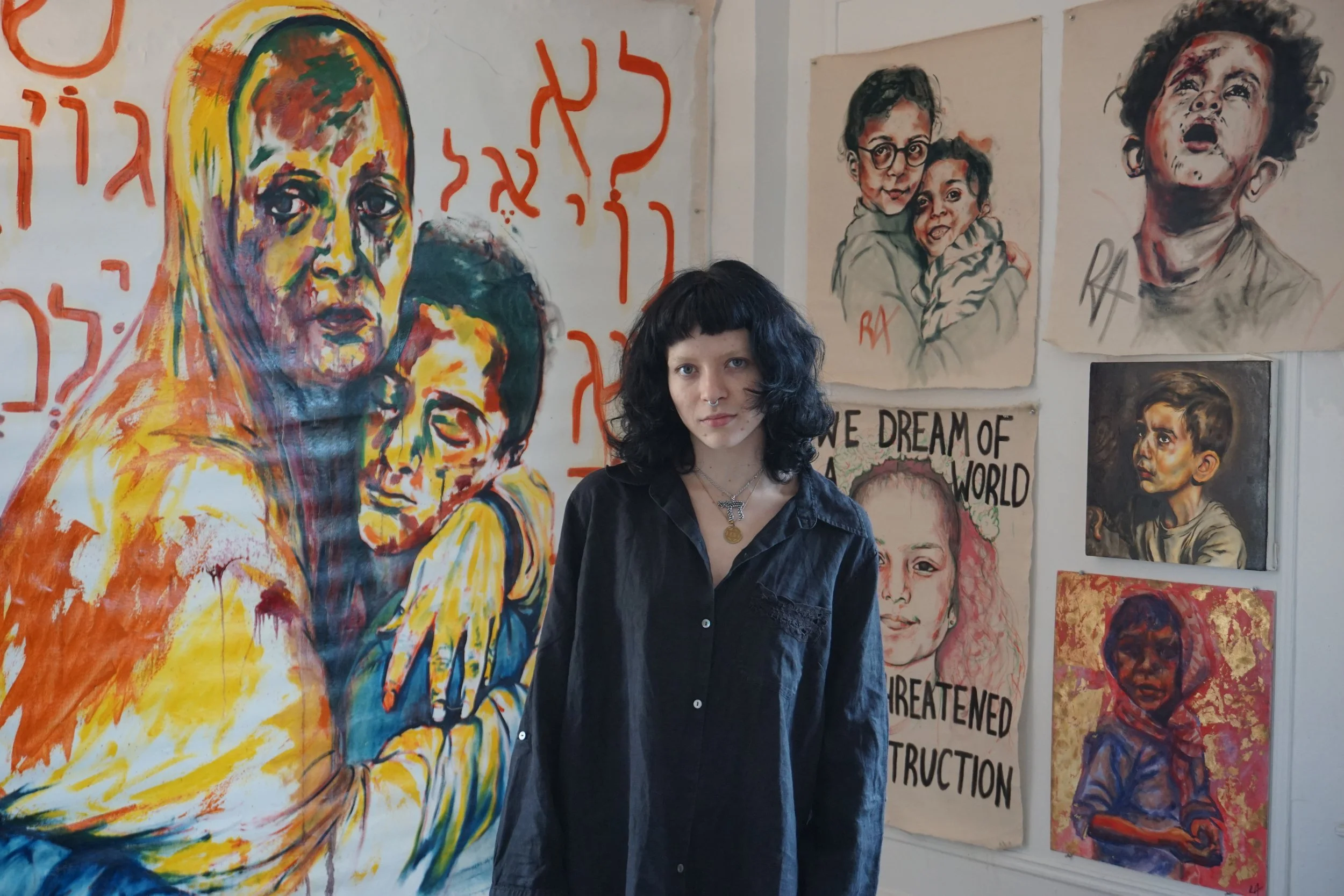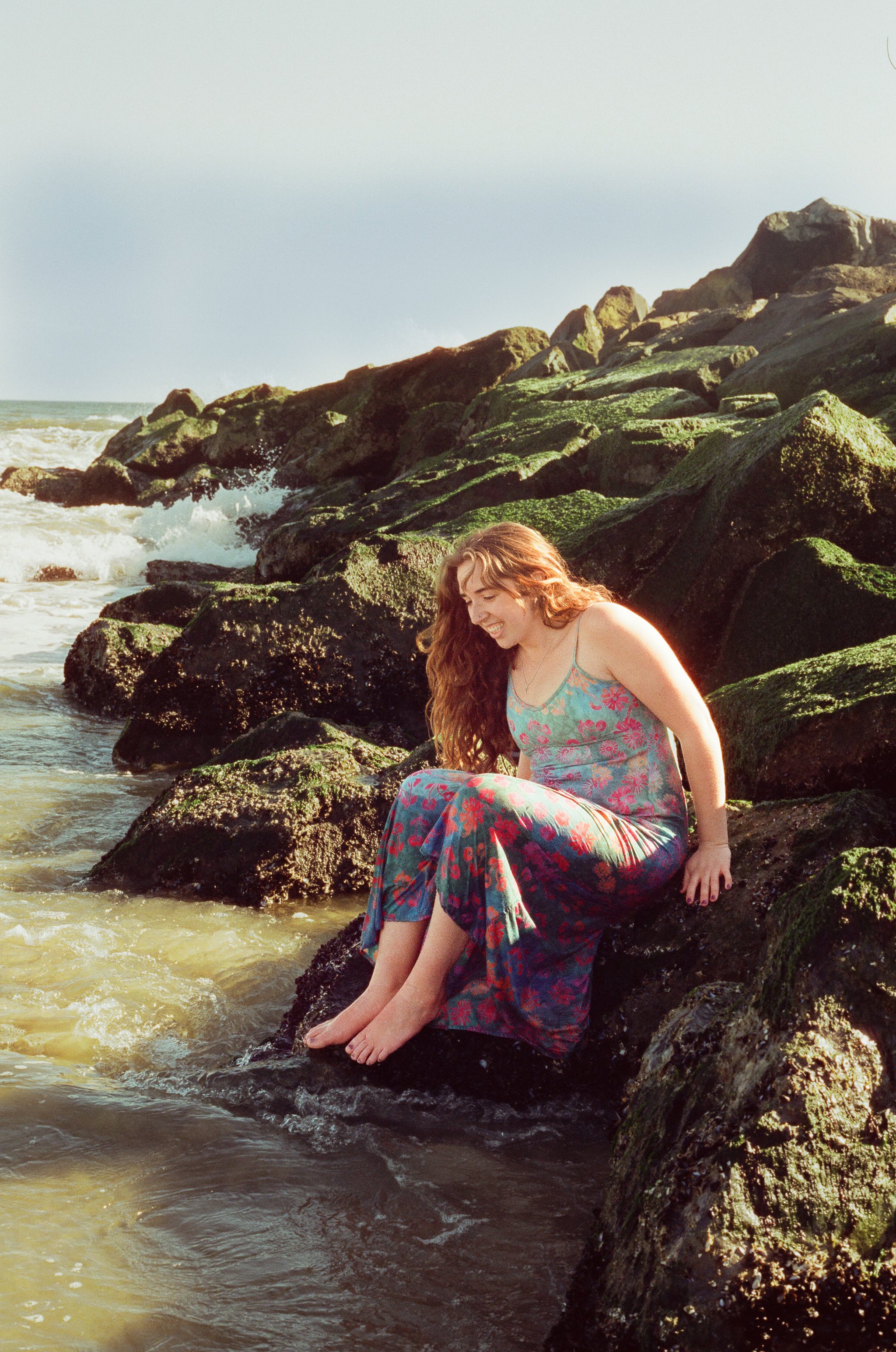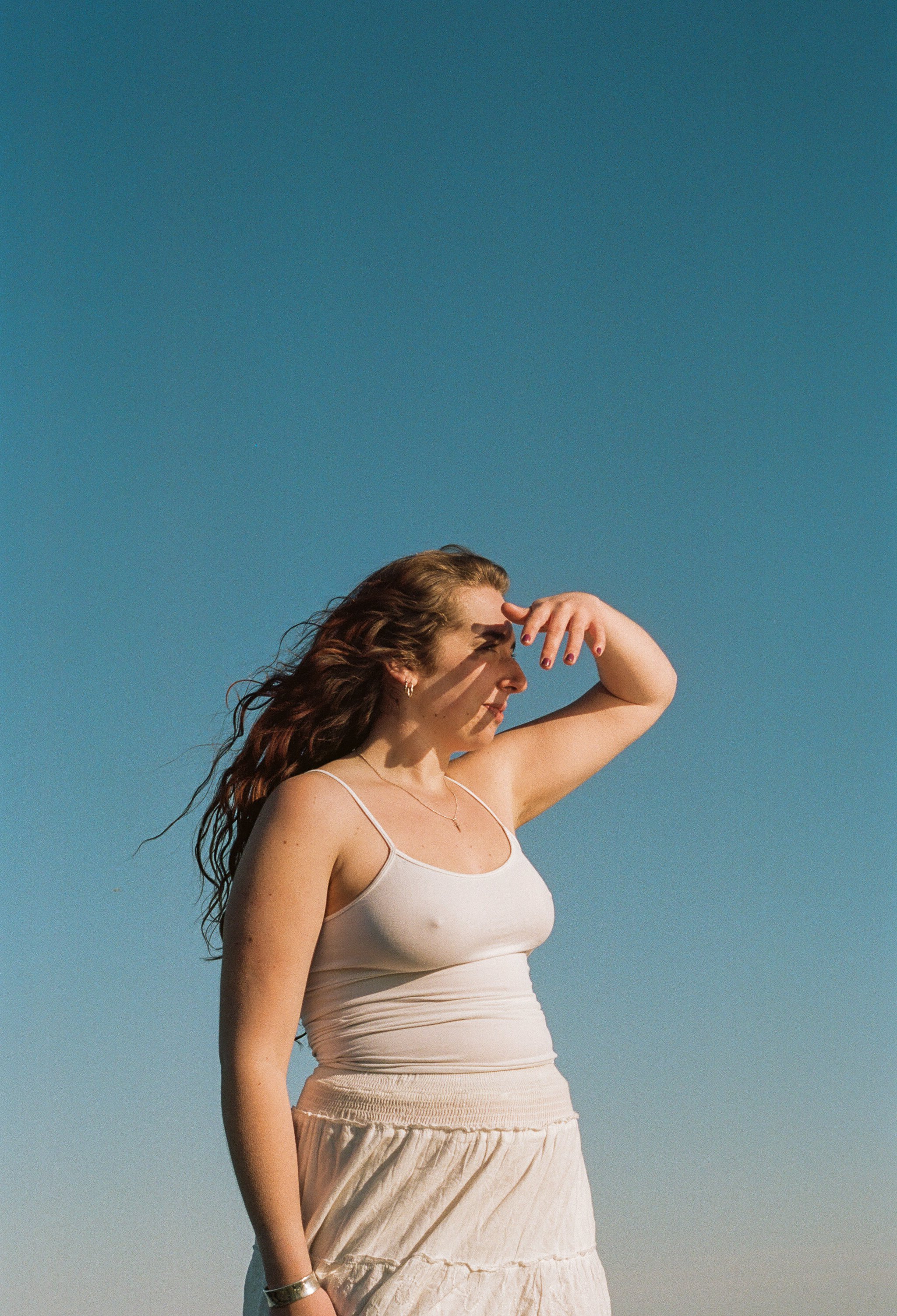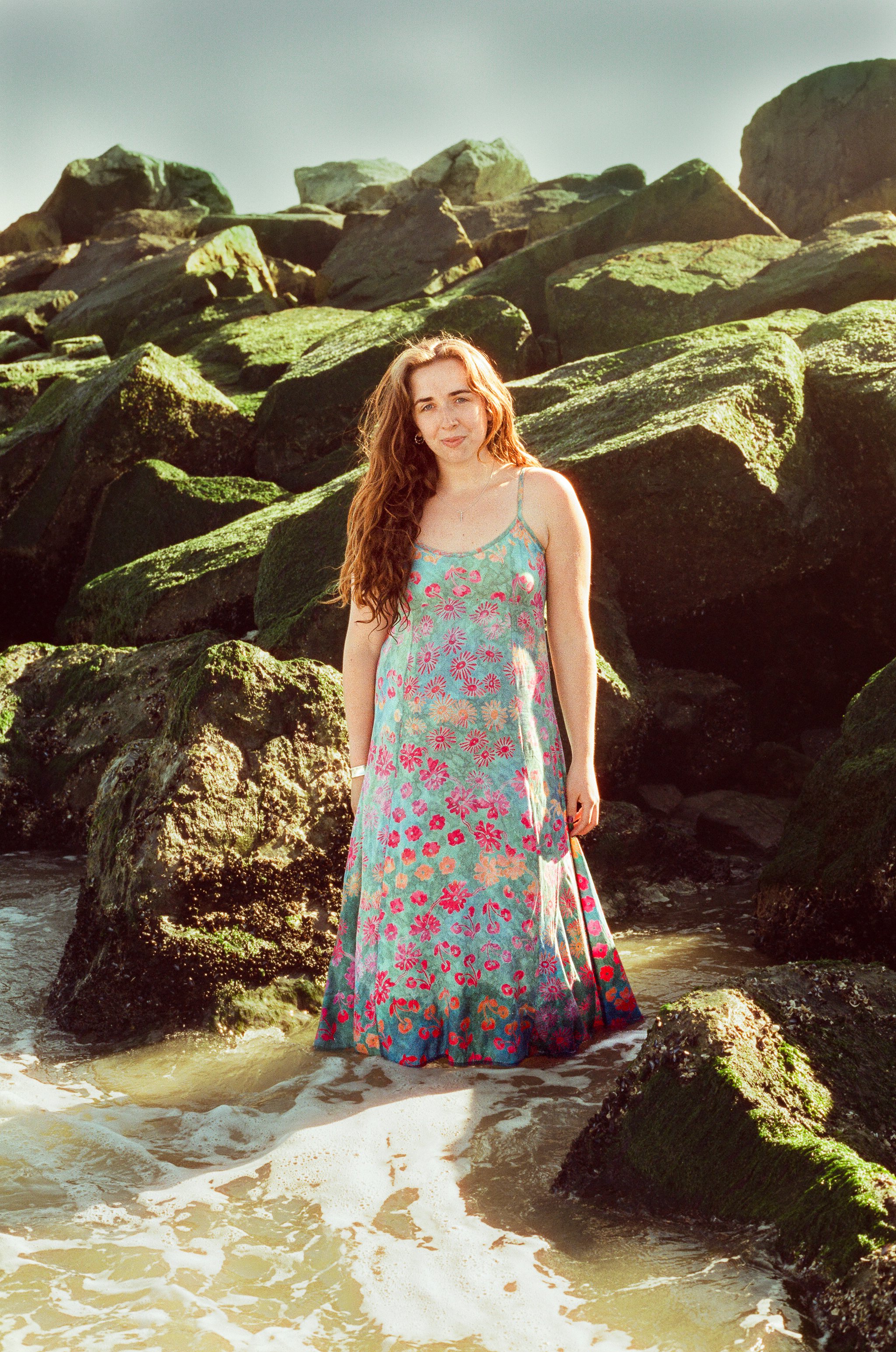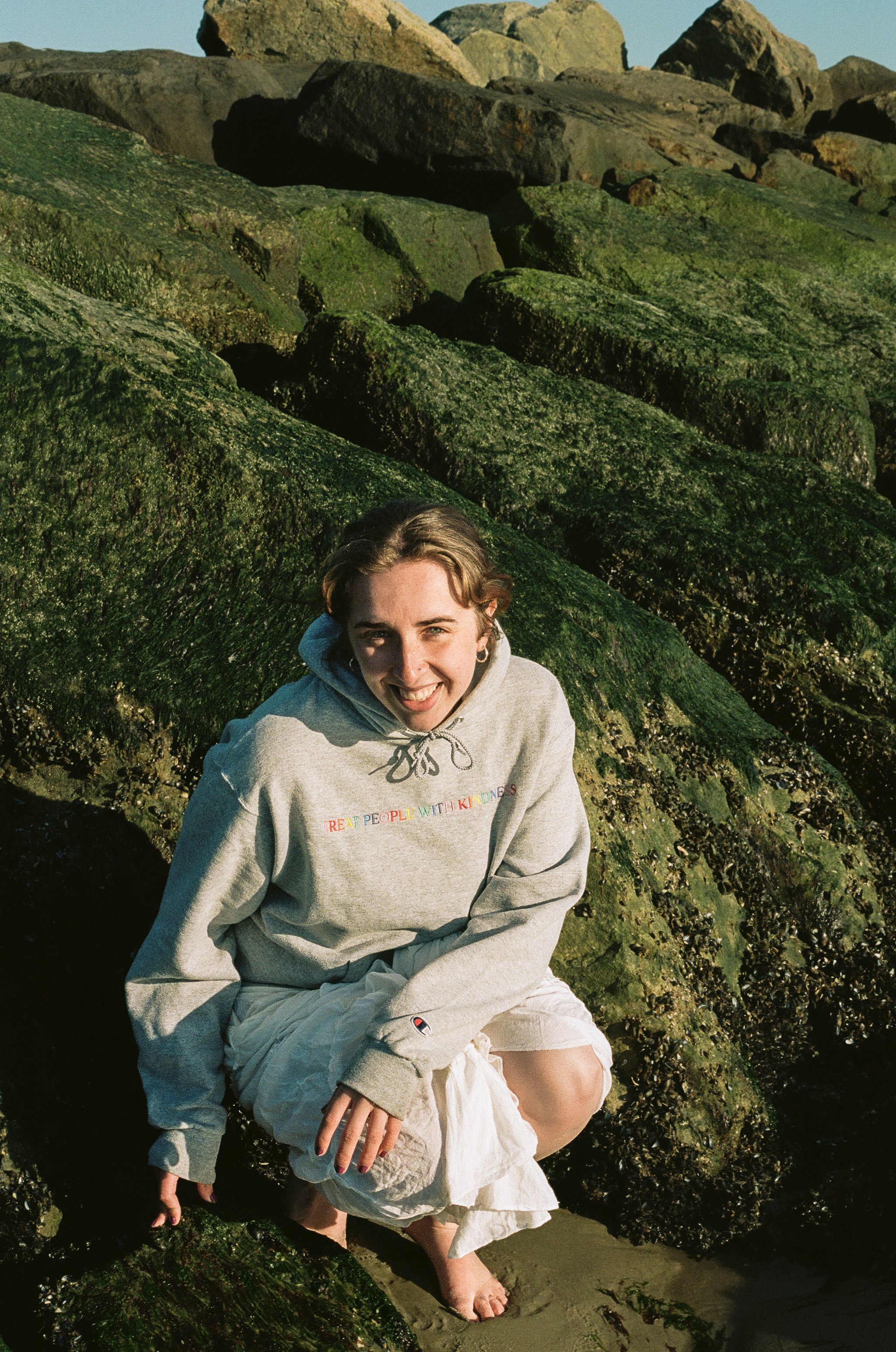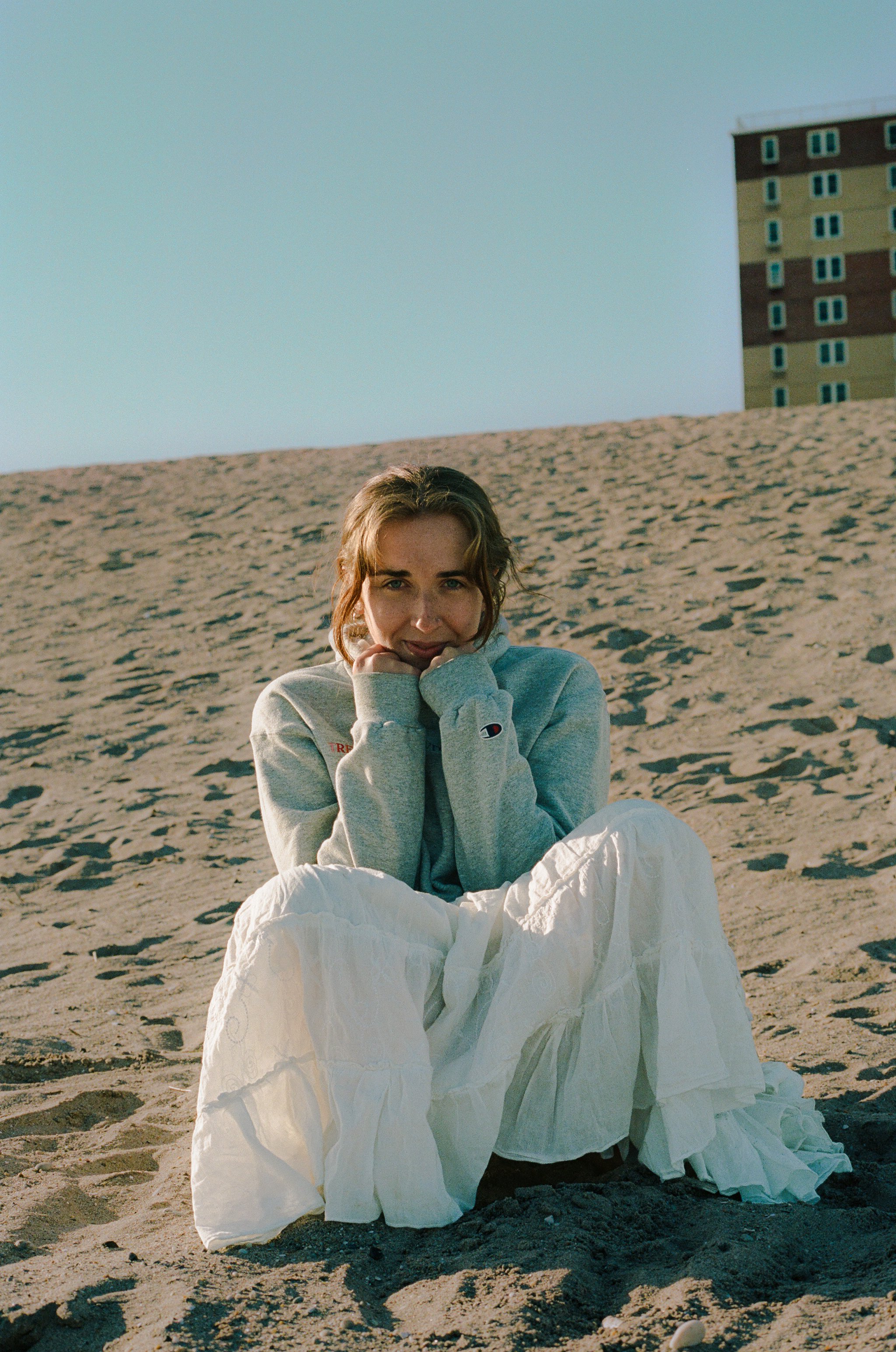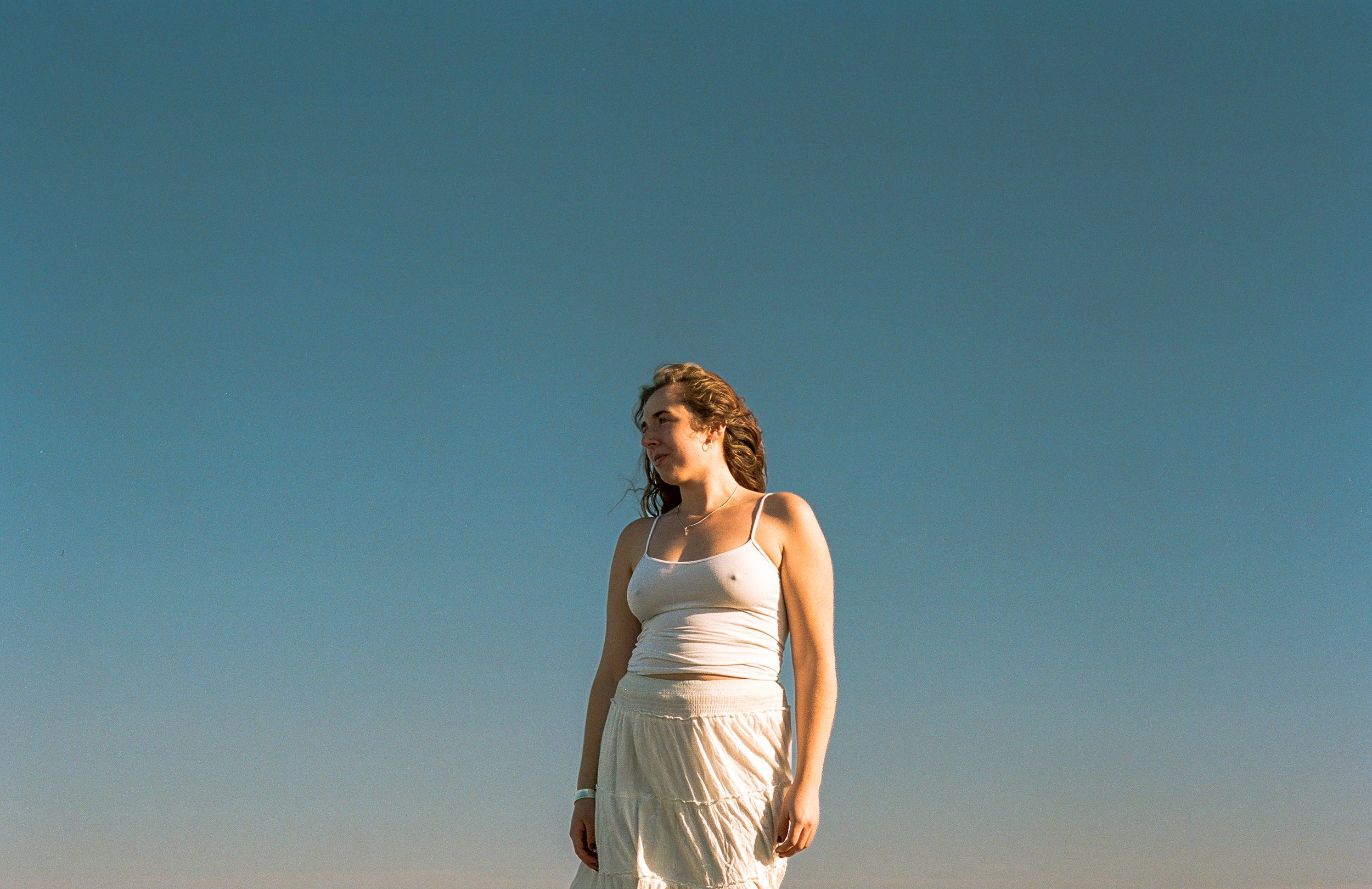Feature by Susana Crane Ruge
Photos by Anais Mitelberg
Kathryn Whitten is a Junior at Columbia College majoring in Visual Arts. She creates calm, colorful, realistic pieces using different mediums, although she prefers oil painting. She has grown up surrounded by art, and likes to express love, devotion and appreciation for her subjects and a moment’s details in her work. Today we met via Zoom, so our conversation progressed dynamically, as we moved around trying to find the best connection possible.. We spoke about the process of growing up, the clash between realism and abstraction, and what it means to be away from home.
Tell me a little about your relationship with art.
My dad is a painter, so I grew up with art all around me. I’ve never not been surrounded by it. However, a deciding moment in consolidating myself as an artist was in third grade. I had a drawing assignment and I really wanted to draw Harry Potter to the T. I remember my dad sat down with me and taught me how to draw, how to really look at things in order to represent proportions accurately. After that, I was hooked. I started out by drawing celebrities or cartoons, but eventually I progressed into landscape, my family, my friends, and my boyfriend.
Why do you make art?
It’s a personal thing for myself, something for me to show love and devotion. I do art because it slowly allows me to capture everything, to represent reality as I process it. Then, when I show the work, I want it to have an effect on other people, to share everyday scenes as beautiful, as appreciated and loved. My TA said to me in class the other day, “You see beauty in everyday life?” and when I nodded she said “Oh, that must be nice”. I want to encourage others to look for that beauty in their own lives. I think part of what I want to share is the way that I get to see the world as an artist, because I feel so blessed for being able to find deep beauty in the mundane - I want others to experience that too.
How did you venture into different kinds of mediums?
KW: I was really interested in oil because of my father. He gave me my first set of oils when I was 11 and promptly took them away after a month because I kept on getting it all on the walls. After this, I figured I'd try acrylics out. I stuck to this technique for a while since I had more exposure to acrylics than oils. Since I live close to the National Seashore, I’ve always been inspired by the landscape. We would go and visit mostly Yosemite and the National Seashore, so I relate these landscapes to such dear moments in my life. When, eventually, I got my oils back, I specialized in landscape art. I love to use oils for this because it is limitless when it comes to colors and textures, it paints so beautifully.
Audrey at a Cafe in Dublin
You have some pieces in crayons, could you tell me why you ventured into that specific medium?
I really don't know why, I just love crayons. My mom was a kindergarten teacher, and one day, I was hanging out in her classroom and didn’t have my materials around, so I decided to take some crayons out of her drawers to work with. I truly loved them. The texture they make is just really nice, they layer and mix colors weirdly beautifully. For one of my classes I had to draw a full scale portrait, so I did it with crayons because they’re also super cheap. It was nice to be able to go and buy a $5 box of crayons and make a cool piece.
I did want to mention, I've gotten super into printmaking lately, which is something that I did not have any access to before coming to Columbia. I found a class that offers it, which we're really lucky to have because it's hard to find good printmaking classes outside of school. I took an intaglio class and I fell in love with that process because I love that I can get these shades of different values, which is already how I paint.
Chicken Ranch Beach
How has your inspiration changed as you’ve grown up?
As a kid I’d draw what I was interested in: celebrities, crushes, cartoons… whatever I liked. My mom would always look over my shoulder and tease me because I was drawing my new crush. Nevertheless, my interests changed as I got older. I soon shifted to focusing on landscape, family, and my boyfriend. But I guess I still paint what I like. Coming to New York solidified my interest in two main topics: California and my boyfriend. Probably because I’m away from them and miss them so much. I paint about them to feel them closer to me. But lately, I’ve grown interested in painting people around me too. I love that art can be a way to build community–to bring people closer together. With portrait painting specifically, I have been trying to figure out how to implement more portraits in New York, but there’s a lot of practical challenges having to do with that.
What are some of those practical challenges?
KW: I only draw when I’m truly, deeply, inspired - not only by the subject, but by the lighting and the overall composition in a precise moment. Here, since my community isn’t as strong, and life goes a lot faster than when I’m at home, I have to start worrying about staging perfect moments to paint, getting someone to model, setting up the lighting... And I hate feeling that the moment I am trying to paint is staged or inauthentic, but it is unavoidable, because when I find moments I want to capture, announcing that I’m about to take a picture damages the ephemerality of the moment.
Two Musicians in Dublin
Then, do you exclusively work from reference?
I do. In order to overcome these limitations, I have been learning to paint from memory. But that's still in the works. One of my favorite painters, Pierre Bonnard, decided he needed to learn to work from memory. So, he spent two years doing nothing but drawing, and trying to figure out a way to remember things well enough to paint it. His work inspires me so much that I need to learn his technique!
Have you ever tried to make abstract pieces?
I paint realistic pieces because it’s my way of capturing my subject with devotion, care, and gratitude. I respect what I am painting. To me, making art isn’t just about me, it's an attempt to capture my feelings towards someone I love in a particular instant.
However, I don’t like painting overly realistically to the point where my art becomes an illusion, because I think that makes for a faster read of a painting. I play with pieces, and shades of color that can be seen abstractly. It forces the viewer to slow down when interpreting the painting; they have to identify the shade of color and the shapes of its placement, place it somewhere on the canvas, while also seeing it in the context of the overall images. I enjoy that temporal aspect to the act of consuming art–it makes you have to look for longer and process it slowly, enjoying every millimeter of each piece.
What are your favorite pieces in your catalog?
My favorite piece at the moment is a painting of my boyfriend that I titled Blonde on Blue. I was super proud of myself for that title because I'm a huge Bob Dylan fan, and he's got that album Blonde on Blonde, so I was like, ‘this is genius.’ Aside from that, I love that painting because it’s a tender memory of just being with my boyfriend. He always sleeps in, and I love waking up early in the morning. This particular morning I was drinking coffee and reading, and the light was coming in so perfectly–the way it reflected on his blue sheets and his skin was beautiful. People always ask me why I have so much blue in my paintings, they think it's a profound thing, but actually it’s just that my boyfriend’s sheets are blue.
On the other hand, some of the recent paintings I've been making in my painting class have been difficult for me because I must work exclusively from photos. It’s becoming repetitive, and I don't like when things get too easy, or mechanical. There’s no struggle. The creative process of making mistakes and changing your mind diminishes, which I really dislike. I have lost part of my engagement with the paintings lately, just because of that technical limitation. You can tell when a piece has been automated: you can see if the artist is not engaged or actively making decisions or figuring things out. When it comes too easy, the painting doesn’t turn out as well.
Sunday Breakfast
How can you tell whether an artist is engaging with his subject matter or not?
First of all, you can always tell if an artist has certain things that they've done a million times. Then it becomes shorthand for them–you can tell that they've just done it quickly.
Recently I went with my dad to see a John Singer Sargent show in San Francisco, and he would repeat this mannerism again and again. We both thought he was too good at this specific stroke for his own good. It seemed like he was whipping it out because it was easy- it seemed impersonal and automatic.
On the other hand, paintings where you can see the artist making decisions as they go through it, changing their mind… I love those! Matisse drawings where you can see his erased versions, behind the final one. I love that! There’s also one from Bonnard- he had a piece hanging up in a museum and he proceeded to have someone distract the museum’s guard so that he could use a box of travel paints to alter the piece, right then and there. I like the idea of art never being finished.
You have quite a few self portraits. What does painting yourself mean to you?
I started doing self portraits as a way to overcome the technical challenges I mentioned earlier.I wanted to make instantaneous paintings, and the only model I could do that with was me. Drawing myself, I gained that immediacy that I was looking for. Also, because my relationship with my body has changed throughout the years, I love that when I'm making a self portrait, I force myself to view something abstractly, so I can then represent it accurately. When I get into that zone, I’m freed from all those judgments. That’s cool to think about because that's what happens when you start appreciating all this beauty around you. When you see things and translate into an abstract thought, you don’t make a judgment, your job then is to translate it, yet again, into art - isn’t that great?
One cool example is Catherine Murphy, who does hyperrealism, and she talks about how the artist has to be able to completely go into abstract mode to be able to paint something realistically. She told a story about painting this box that had 11 pounds written on it and her husband came in and was like, ‘oh, 11 pounds,’ and she was like, ‘what?’ She hadn't even realized that she had written 11 pounds on the painting. I think that that's a great story to illustrate what it feels like to be painting realism, and the process of translating reality into art. Going through this process with myself is really interesting because I become abstract while I paint myself, which has helped me to see myself with less judgment, and more appreciation.
Maggie at North Beach

